The new app is called watchGPT and as I tipped off already, it gives you access to ChatGPT from your Apple Watch. Now the $10,000 question (or more accurately the $3.99 question, as that is the one-time cost of the app) is why having ChatGPT on your wrist is remotely necessary, so let’s dive into what exactly the app can do.
NEWS
TikTok emerges as a political battleground in Navalny-stirred Russia
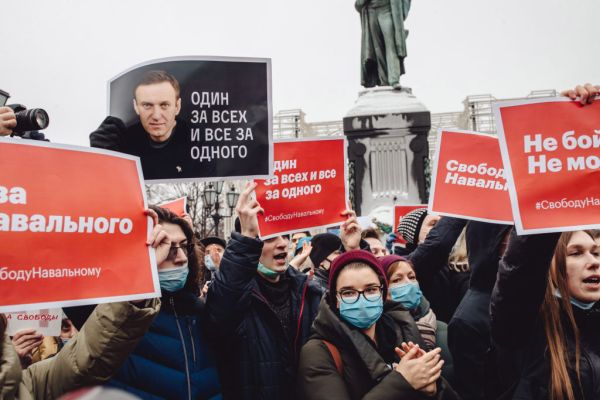
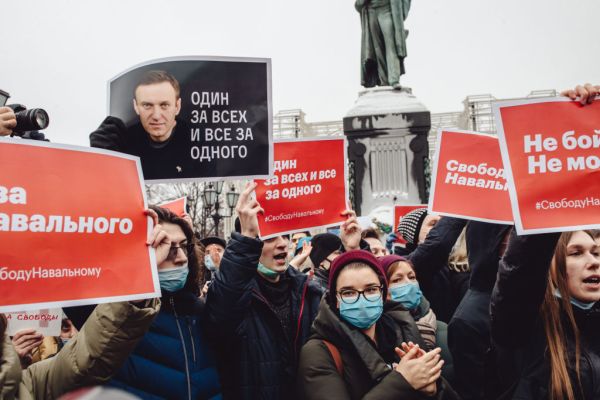
TikTok has crafted a number of policies over the years to distance itself from the often-messy political fray, but its users continue to have other agendas in mind.
In Russia, a tug-of-war has emerged on the social network.
On one side are young people using the app to create videos in support of free speech, rallying the public against the government and its treatment of Alexei Navalny, the anti-Putin, anti-corruption politician and activist.
On the other is a government that has quickly versed itself in the art of video messaging — tapping and allegedly paying influencers to dissuade the masses from joining them.
Navalny’s long-term battle with Putin’s government has included political run-ins, imprisonments and a poisoning (with an evacuation to Germany to heal), followed by a return to Russia, subsequent arrest and conviction for violating a previous parole.
Through all of that, Navalny has taken on the mantle of anti-authoritarian hero. With many already unhappy about how the government is handling a weak economy and COVID-19 — a situation that has shaken (but, apparently, not completely toppled) government approval ratings — Navalny’s call for mass protests has been met with a strong response.
And as those protests unfold, TikTok is shaping up to be the scrappy social media analogue of that activity — not unlike the prominent role that Twitter took on during the Arab Spring.
“Political content is not typical for Russian TikTok,’’ said food blogger Egor Khodasevich, whose @kushat_hochu account has 1.2 million followers on the app. “Before Navalny’s return, Russian TikTok was all about dancing, pranks and post-Soviet trash aesthetics. All of a sudden, political videos have started to appear across all categories — humour, beauty, sport.’’
Now, in a significant turnaround, Russian content on the app is being flooded with catchy videos of teenagers cutting their passports in half and throwing them away, pupils taking down portraits of Putin and swapping them with those of Navalny, and others creating how-to’s for would-be protestors — advising them to wear warm clothes, to equip themselves with water and power banks and, if arrested, to pretend they are foreign.
@almorozova#навальный #свободунавальному быть против власти – не значит быть против Родины♬ оригинальный звук – новый год кончился…
These are pooling around hashtags like #23января (January 23, the date of one of the biggest protests so far) and #занавального (“For Navalny”).
The wave of videos even got shout-outs from Navalny himself — fittingly, not on TikTok, but Instagram, where he praised the TikTok activists for helping get the word and the crowds out.
“Respect to the schoolchildren who, according to my lawyer, caused a frenzy on TikTok,” he noted on one post. Later he poked fun at how the TikTok protest videos were described as “fakes” planted by dastardly Americans.
Russia as a country has a small but fast-growing and vocal group of TikTok users.
Figures provided to us from SensorTower estimate that of the more than 2.66 billion times to date globally that TikTok has been downloaded (a figure that includes its Chinese version Douyin), it has been installed about 93.6 million times in Russia (figures that don’t count third-party Android stores, direct downloads or sideloads).
A report in the Moscow Times from the end of December estimates that there are around 20 million active users in the country, more than double the 8 million it had at the end of 2019. TikTok itself does not disclose current MAUs in Russia or globally, but analysts have projected that the company is on track to pass 1 billion MAUs sometime in the early part of this year.
Even with those sub-100 million numbers, videos with the Navalny hashtag have passed 1 billion views on the platform (as of the time of publishing, the number of views has passed 1.6 billion).
The Empire Strikes Back…
But Russia is nothing if not persistent when it comes to being ahead of the game in tech, and it has been harnessing the media world in a couple of ways in aid of its own ends.
State television and other state media outlets strongly encouraged people to stay away from protests, citing issues like public safety, the spread of Covid-19, and the threat of arrest (one they followed through on: authorities have carried out controversial mass arrests of hundreds of people at these gatherings).
At the same time, attention turned to social media, and in particular TikTok.
Roskomnadzor first confirmed that it would fine all major social media platforms up to 4 million rubles ($54,000) over protest-related content, citing that “these Internet platforms failed to remove a total of 170 illegal appeals in a timely manner.”
It then followed that up with an order to the management teams of TikTok, Facebook, Telegram and Vkontakte to appear at the regulators’ offices to explain why they have not yet removed offending videos, reminding them that failure to comply will mean that fines will be increased to 10% of a company’s annual revenues, dangling the threat that non-compliance could mean services get blocked.
With TikTokers claiming they were being called in by the police after their videos were taken down, TikTok more directly started to get threatened with fines by the regulator in the wake of all this.
As with previous moves to censor online platforms, investigators explained their actions as a response to societal impact. In this case, regulators described protest videos as a coordinated criminal attempt to get minors to commit illegal acts that could endanger their safety.
In addition to all that, the state appeared to take on a guerilla approach, too.
Small accounts, newly created accounts and popular bloggers slowly all started posting videos persuading people away from the protests. These videos, in Russian, warn of the dangers of protesting.
It turns out that at least some of the people posting videos were quietly getting paid. Sums ranged from 2,000 rubles, or about $25, through to 5,000 rubles, according to one TikToker who declined the offer and posted the proposal on TikTok instead.
(Those figures may not sound very high, but they can still be welcome sums for young people in a country where the average salary as of 2019 is around $718 per month.)
It hasn’t taken long for the situation to get unmasked. Several videos criticizing protests have been removed in the last week. It’s unclear whether TikTok — which declined to comment for this article — or the original creators removed them.
But in one case, a TikToker who goes by the name @golyakov_ (741,000 followers) initially posted a stream of reasons why protesting was dangerous. He then later admitted to getting paid but claimed to believe in what he was saying (perhaps one reason why the video has stayed up?).
Startok, one of the agencies that represents social media influencers, confirmed to us that it has cut ties with two of the creators who had taken payments to make videos in support of the state.
TikTok’s immediate connection and current popularity with younger adults has made it unique in the social media pantheon. However, it wasn’t the only social media platform seeing anti-Navalny activity — both in terms of messaging, and entities soliciting posts for payments.
A Navalny assistant posted this thread on Twitter of Stories from Instagram casting doubt on Navalny’s decision to return to Russia as a publicity stunt, knowing he would be arrested.
Meanwhile, Boris Kantorovich, a sales director of social media agency Avtorskiye Media who has used Twitter to post about people getting detained, noted that he also came across briefs on Telegram chat ADvizer.me, as well as in a Facebook group that required bloggers to create a video with one or two talking points. He said included “protesters provoked the police at the rally,” “we are tired of Navalny” and “we want peace and quiet.”
When Kantorovich posed as one of the TikTokers that he represents, he received a brief for a 15-second video. “After a quick negotiation I hiked the price up from 2,000 rubles to 3,500 rubles,” he said.
Further creative briefs came with the guidance that they needed to condemn protests on 31 January and 2 February, the second being the date of Navalny’s trial.
“Bloggers should say that ‘Navalny will go to jail 100%’, he is ‘funded from the West’ and ‘his recent imprisonment is legal,” Kantorovich said.
Kantorovich added that authorities didn’t reach out to his agency Avtorskiye Media to advertise with the bloggers it works with: “We clearly mark all ads but authorities don’t like it, because they are trying to create an illusion of a public opinion,” he said.
Similar information was shared by Anatoly Kapustin with the “Picture” advertising agency.
Kapustin, speaking in an interview on non-State-owned Russian TV station Rain, named the “public organization for youth affairs” as an advertiser.
“Talking points on offer were: ‘criminal charges could be brought against protesters,’ ‘you might end up in jail and then not find well-paid jobs,’ and ‘Navalny’s children are studying in America,’” he said in the interview.
In some cases, the virality tricks that TikTok is known for have been used by protestors to turn some of those pro-government campaigns around.
After a wave of people created videos based on the same clip of music that repeats in a deep voice that TikTok is not a place for politics, it’s a place for [fill in a fun and non-political activity/video here] — the audio and hashtag were hijacked by protestors seeking to encourage people to embrace free speech and not silence their voices.
TikTok declined to comment for this story, but in general the company has made it a policy not to wade into partisan politics, or to make a space for political advertising, turning its platform into a commercial opportunity to get political points across.
It declined to comment on whether it was taking down videos that might be reported as possible paid advertising by viewers, nor would it comment on whether it had responded to any government requests to remove videos. It periodically publishes transparency reports where some of that detail, and its subsequent actions, can be found, after the fact. (It judges each request individually.)
One thing that the Navalny situation has exposed is that there is a strong appetite among younger people to be more politically engaged, and for the moment, TikTok is emerging as their preferred place to do that.
Khodasevich, the food blogger, thinks TikTok can replace Twitter as a platform of choice for the opposition in Russia.
“Thanks to its clever algorithms, TikTok can show your video to a bigger audience than YouTube or Instagram, even if you don’t pay for promotion,” he said in an interview. “TikTok representatives told me political videos without direct calls for protests will not get banned.’’
It means that, with a bit of creativity — and a very heavy dose of opportunism and cynicism — both sides might still be able push forward with their political agenda. Boris Kantorovitch agrees.
“Authorities will change their strategy and become more subtle,” he said. “They acted in haste. Probably they thought of TikTok as a good breeding ground for loyalists. Now, the only way to stop people talking about politics on TikTok is by banning access to this platform.’’
Or, if you can’t beat them, join them? The last few days have seen government organizations the Ministry of Foreign Affairs and the Ministry of Emergency Situations joining the platform to give the public a glimpse into how they, too, can roll with it.
@mchs.russiaВы только посмотрите, что могут наши сотрудники! Отправляйте свою реакцию в комментариях!Спасибо за предоставленное видео @@anatoly.doletsky♬ оригинальный звук – МЧС России
Some of the content is not exactly subtle — the Foreign Affairs almost immediately used its new account to post a TikTok discrediting Navaly — but more generally, these are signs that the government is all too aware of the impact the platform is having to galvanize people against it, and it’s trying various things to fight that.
So did TikTok really manage to bring a considerable number of young people to rallies? Are we witnessing a birth of a new protest movement or yet another example of one click activism?
According to a poll conducted on 23 January by TV Rain in Moscow, 44% percent of protesters took to the streets for the first time ever. Only 10% of respondents were under the age of 18, with an average age of protesters hovering around 31 years old, showing an overlap with the audience using TikTok in the country.
Other major movements (such as last year’s run of BLM activism) point to 18-34 being the biggest age demographic among protestors (albeit, worth noting strong participation among other ages, too).
With that in mind, it seems that both authorities and opposition in Russia will try to use the social media platforms most popular among that age group to recruit their new foot soldiers.
Social media might even take on a bigger role in coming months, as the wave of physical, outdoor protests have died down amid the Russian winter weather and the police response, giving people a moment to regroup.
In the meantime, Navalny supporters are planning to stand outside their homes on Sunday evening, February 14, from 8.00 – 8.15 pm, holding up their telephone flashlights, taking photos and uploading them to social media using a new hashtag: #ЛюбовьСильнееСтраха (Love is Stronger than Fear).
The Kremlin may well oppose these, too. Spokesperson Dmitry Peskov on Tuesday said that that “in the event of a violation of the law, all our law enforcement officers will bring those responsible to justice.”
Of course, as with everything on social media, it’s sometimes hard to figure out everyone’s actual agenda. As Khodasevich said, some political posts are genuine, some could be attributed to “news jacking.” But ultimately, they are sparking a lot of attention that the government is now mobilizing to counteract.
And with another critical Navalny hearing coming up on February 15th, as well as the September 2021 state Duma elections being only months away, the stakes are high for whatever political battles come next.
Facebook Faces Yet Another Outage: Platform Encounters Technical Issues Again
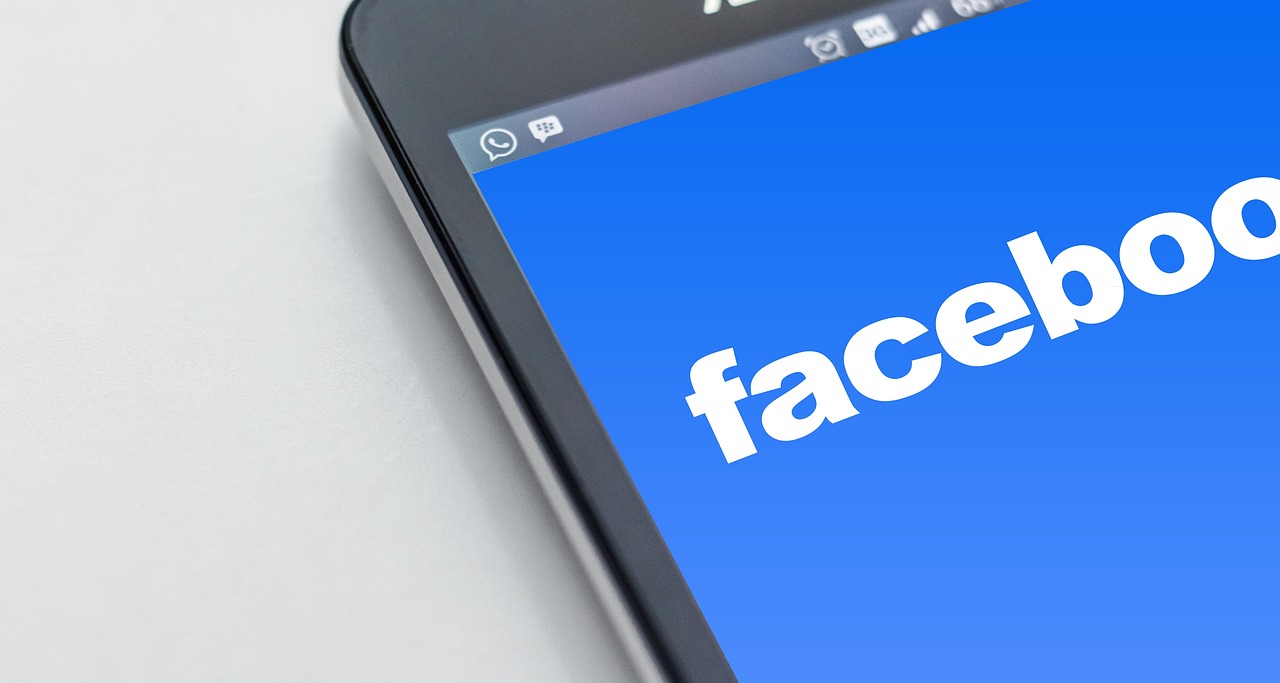
Uppdated: It seems that today’s issues with Facebook haven’t affected as many users as the last time. A smaller group of people appears to be impacted this time around, which is a relief compared to the larger incident before. Nevertheless, it’s still frustrating for those affected, and hopefully, the issues will be resolved soon by the Facebook team.
Facebook had another problem today (March 20, 2024). According to Downdetector, a website that shows when other websites are not working, many people had trouble using Facebook.
This isn’t the first time Facebook has had issues. Just a little while ago, there was another problem that stopped people from using the site. Today, when people tried to use Facebook, it didn’t work like it should. People couldn’t see their friends’ posts, and sometimes the website wouldn’t even load.
Downdetector, which watches out for problems on websites, showed that lots of people were having trouble with Facebook. People from all over the world said they couldn’t use the site, and they were not happy about it.
When websites like Facebook have problems, it affects a lot of people. It’s not just about not being able to see posts or chat with friends. It can also impact businesses that use Facebook to reach customers.
Since Facebook owns Messenger and Instagram, the problems with Facebook also meant that people had trouble using these apps. It made the situation even more frustrating for many users, who rely on these apps to stay connected with others.
During this recent problem, one thing is obvious: the internet is always changing, and even big websites like Facebook can have problems. While people wait for Facebook to fix the issue, it shows us how easily things online can go wrong. It’s a good reminder that we should have backup plans for staying connected online, just in case something like this happens again.
NEWS
We asked ChatGPT what will be Google (GOOG) stock price for 2030

Investors who have invested in Alphabet Inc. (NASDAQ: GOOG) stock have reaped significant benefits from the company’s robust financial performance over the last five years. Google’s dominance in the online advertising market has been a key driver of the company’s consistent revenue growth and impressive profit margins.
In addition, Google has expanded its operations into related fields such as cloud computing and artificial intelligence. These areas show great promise as future growth drivers, making them increasingly attractive to investors. Notably, Alphabet’s stock price has been rising due to investor interest in the company’s recent initiatives in the fast-developing field of artificial intelligence (AI), adding generative AI features to Gmail and Google Docs.
However, when it comes to predicting the future pricing of a corporation like Google, there are many factors to consider. With this in mind, Finbold turned to the artificial intelligence tool ChatGPT to suggest a likely pricing range for GOOG stock by 2030. Although the tool was unable to give a definitive price range, it did note the following:
“Over the long term, Google has a track record of strong financial performance and has shown an ability to adapt to changing market conditions. As such, it’s reasonable to expect that Google’s stock price may continue to appreciate over time.”
GOOG stock price prediction
While attempting to estimate the price range of future transactions, it is essential to consider a variety of measures in addition to the AI chat tool, which includes deep learning algorithms and stock market experts.
Finbold collected forecasts provided by CoinPriceForecast, a finance prediction tool that utilizes machine self-learning technology, to anticipate Google stock price by the end of 2030 to compare with ChatGPT’s projection.
According to the most recent long-term estimate, which Finbold obtained on March 20, the price of Google will rise beyond $200 in 2030 and touch $247 by the end of the year, which would indicate a 141% gain from today to the end of the year.
Google has been assigned a recommendation of ‘strong buy’ by the majority of analysts working on Wall Street for a more near-term time frame. Significantly, 36 analysts of the 48 have recommended a “strong buy,” while seven people have advocated a “buy.” The remaining five analysts had given a ‘hold’ rating.
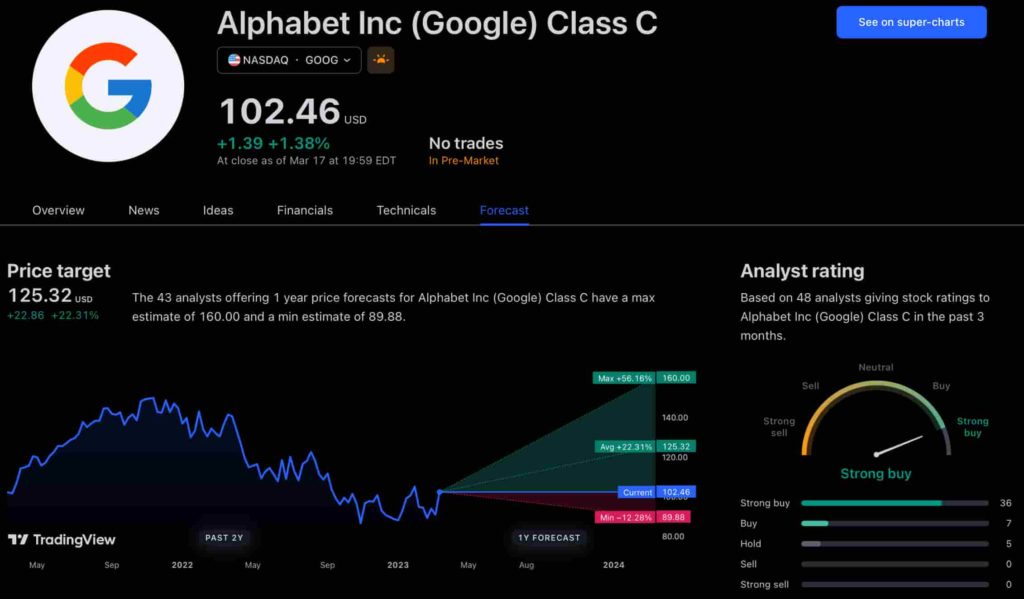
The average price projection for Alphabet stock over the last three months has been $125.32; this objective represents a 22.31% upside from its current price. It’s interesting to note that the maximum price forecast for the next year is $160, representing a gain of 56.16% from the stock’s current price of $102.46.
While the outlook for Google stock may be positive, it’s important to keep in mind that some potential challenges and risks could impact its performance, including competition from ChatGPT itself, which could affect Google’s price.
Disclaimer: The content on this site should not be considered investment advice. Investing is speculative. When investing, your capital is at risk.
NEWS
This Apple Watch app brings ChatGPT to your wrist — here’s why you want it
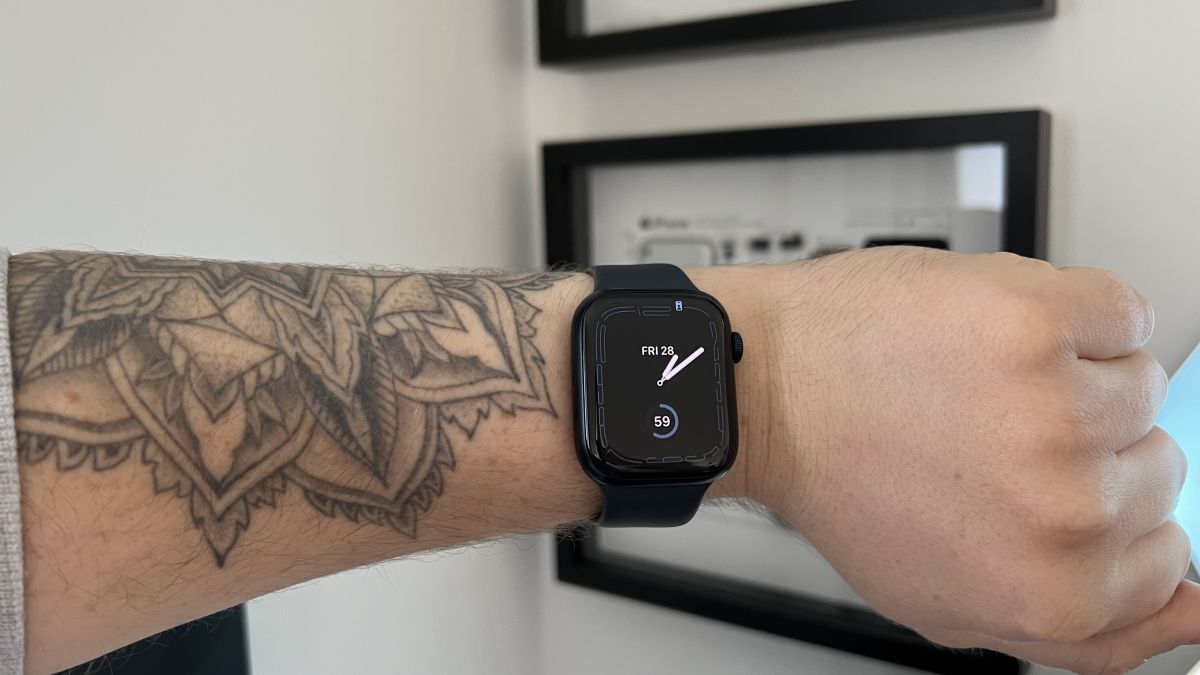
ChatGPT feels like it is everywhere at the moment; the AI-powered tool is rapidly starting to feel like internet connected home devices where you are left wondering if your flower pot really needed Bluetooth. However, after hearing about a new Apple Watch app that brings ChatGPT to your favorite wrist computer, I’m actually convinced this one is worth checking out.
-

 PPC5 days ago
PPC5 days ago19 Best SEO Tools in 2024 (For Every Use Case)
-
SEARCHENGINES7 days ago
Daily Search Forum Recap: April 16, 2024
-

 SEO7 days ago
SEO7 days agoGoogle Clarifies Vacation Rental Structured Data
-

 MARKETING6 days ago
MARKETING6 days agoStreamlining Processes for Increased Efficiency and Results
-
SEARCHENGINES6 days ago
Daily Search Forum Recap: April 17, 2024
-

 SEO6 days ago
SEO6 days agoAn In-Depth Guide And Best Practices For Mobile SEO
-

 PPC6 days ago
PPC6 days ago97 Marvelous May Content Ideas for Blog Posts, Videos, & More
-

 MARKETING5 days ago
MARKETING5 days agoEcommerce evolution: Blurring the lines between B2B and B2C













